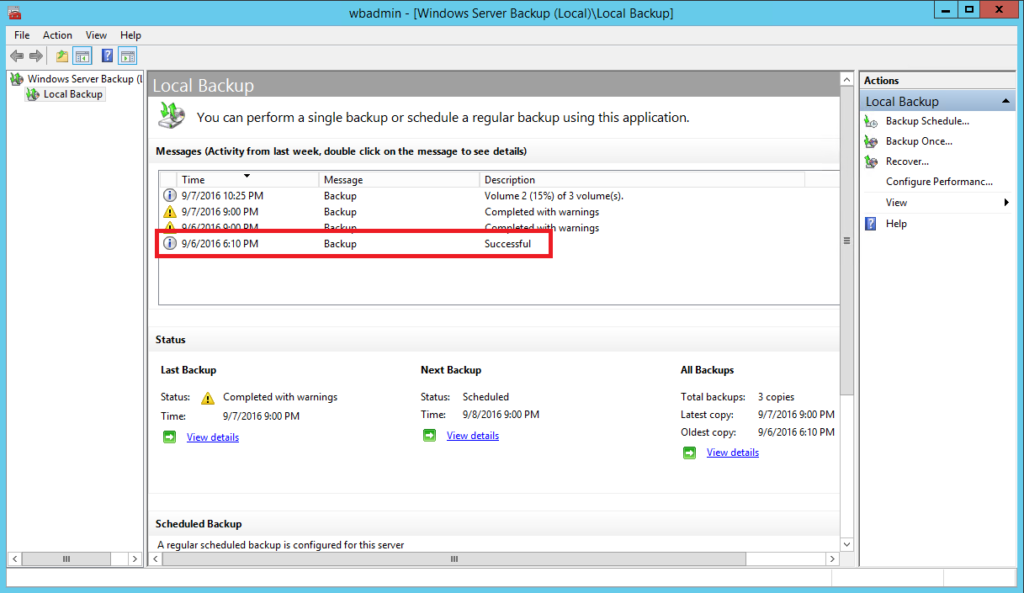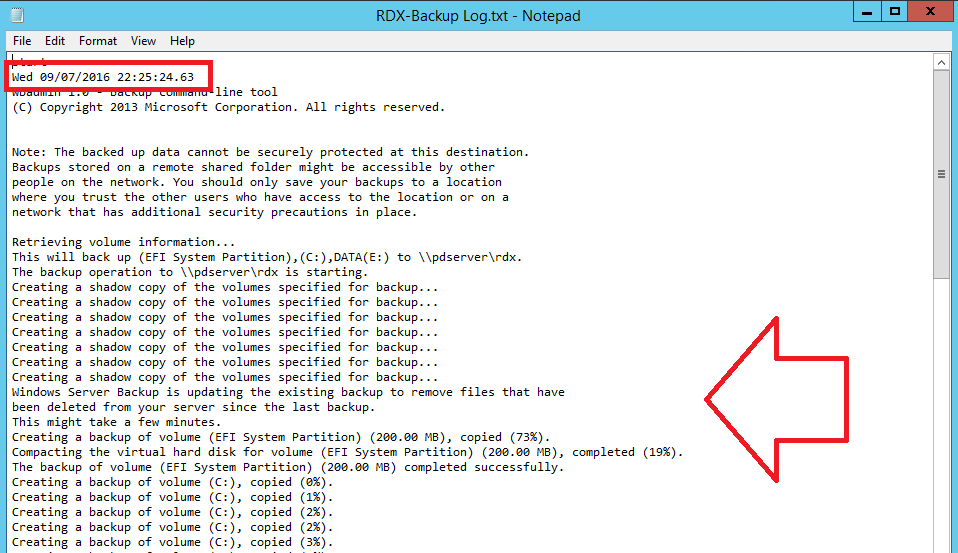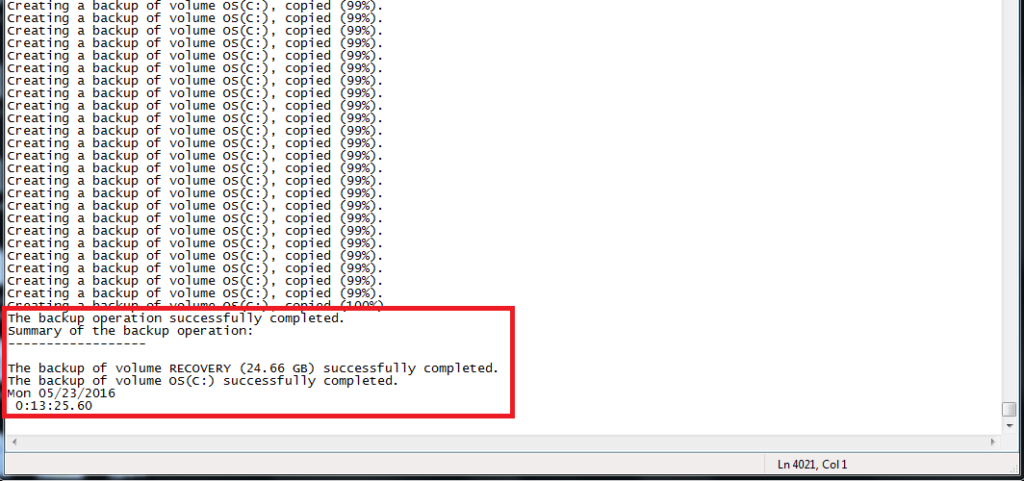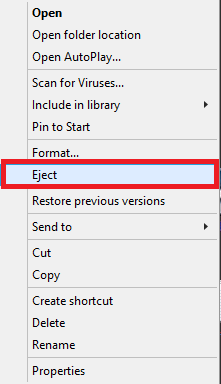Windows Server Backup using USB backup drive and removable RDX cartridges
If your company is equipped with dual backups (external fixed USB drive that stays there, and removable RDX cartridges), here’s how you check your backups and rotate the cartridges.
First, check the backups to the USB/external backup drive
- Double click the Windows Server Backup icon on your desktop
2. You’re looking for “last night’s backup” and “successful”.
Note: Both regularly scheduled USB backups and RDX backup logs will appear here. You can double click each to see which one this log goes with.
Note2: The USB drive might not be used every day. In some locations, we alternate backups every other night because it takes too long to do backups to both RDX and USB drives in one shot, so one backs up on some days, and the other backs up the other days. If you’re unsure, ask us for your particular schedule.
3. If you see the successful backup, then you can rest assured that your system has been backed up.
Next, check the removable cartridge (RDX) backups, and rotate the cartridge.
RDX backups should be checked and rotated often. If you have a big disaster that’s destroyed the server and the backup drive, you’ll appreciate having an off-line backup.
The backup logs for RDX backups also appear in the regular backup program log, but there’s a more detailed log available that ONLY shows the RDX backups, so you’re sure you’re looking at the right one.
- On your desktop, look for an “RDX Log” file. Double click it.
2. In this file, you’ll see a start date & time at the top, a bunch of stuff in the middle, and an end date & time at the bottom.
Make sure the start date & time is recent. This is the last time the RDX backups started.
You’ll also see a log of the actual backup. This should look consistent day to day. If it suddenly and drastically changes, then something may be wrong.
3. Scroll down to the bottom, and note the end date & time. It should be “about the same” day to day. If the backup was taking 4 hours, and suddenly it’s down to 5 minutes, something may be wrong.
You’ll also see a Successful Backup message. This indicates the backup was successful, and that it’s OK to rotate the cartridge.
4. Locate and RDX eject icon on the desktop and right click it
5. The cartridge will now eject, and you can put in “the next” cartridge.
Note: You don’t want to remove the cartridge unless it has a good backup on it. If the backup did not work, you may be removing an empty cartridge and putting in a good backup, only to have that one overwritten too, and you could potentially end up with no backups on cartridges at all. Caution must be taken when managing backup cartridges to ensure you have good working backups on them.
If you have any questions or if something isn’t working right, let us know right away so we can help identify the issue and resolve the problem.




